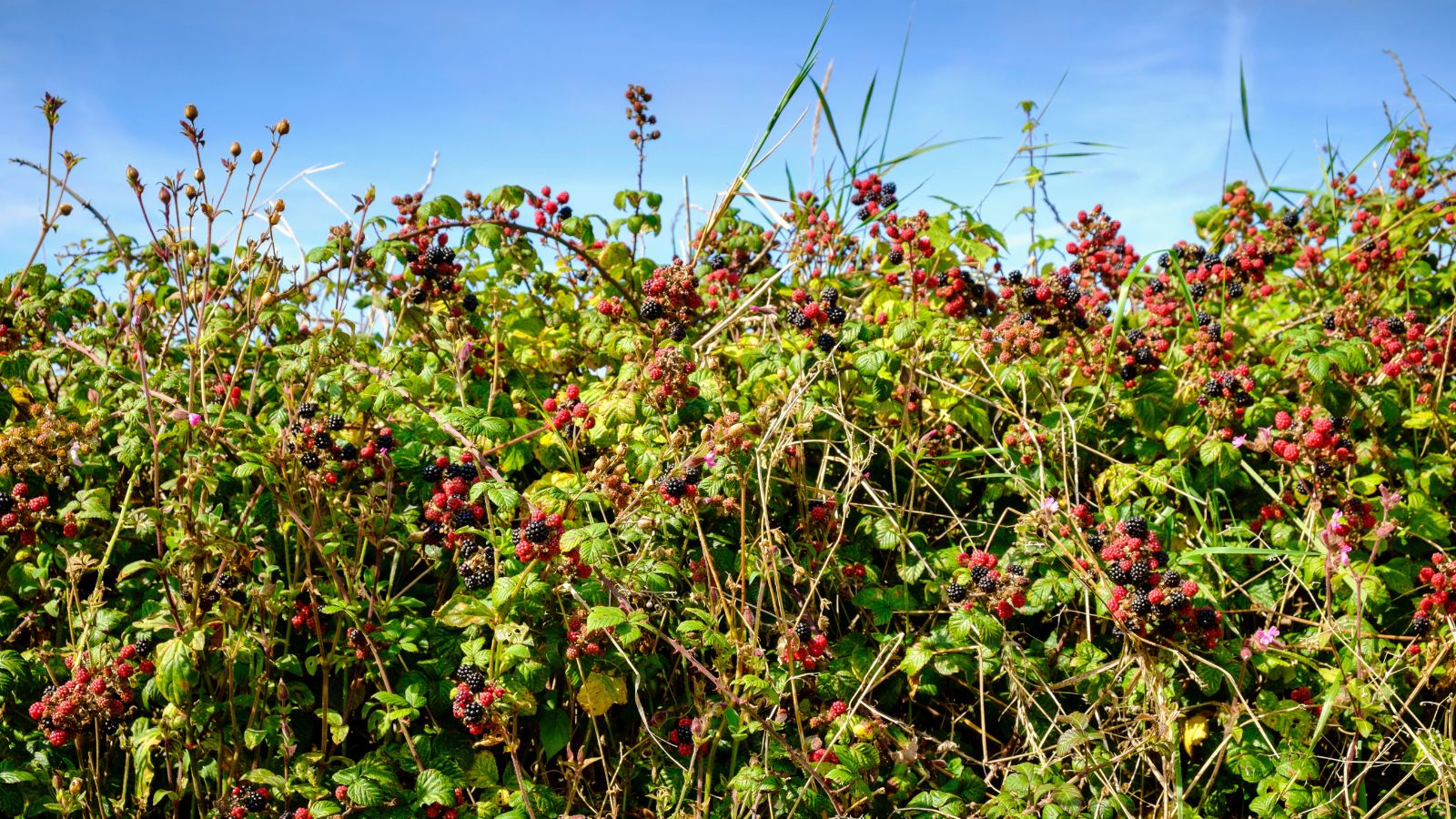When to prune blackberries – expert tips for a healthy plant
Learn when to prune blackberries for a healthy autumnal plant and fall favorite fruits


Blackberries are a wonderful autumnal fruit and make a wonderful seasonal addition to any fall table. If you are growing your own blackberries, it is important to know when to bring blackberries, however, to make sure this tasty crop does not take over your garden.
Blackberry plants are a type of bramble, meaning their plants grow thick, produce thorns, and often become tangled and sprawling. They can quickly take over your garden ideas if they are not pruned correctly and left to their own devices.
Here, gardening expert Rachel Crow has advised when you should prune your blackberries to ensure a tidy garden and a tasty snack.

Rachel has written for lifestyle magazines for many years, with a particular focus on gardening.
Now focusing on gardening content on Homes and Gardens and its sister brands, she finds every day is a journey of discovery, whether it is learning about new plants or gardening techniques, or sharing the advice of passionate horticultural experts and garden designers.
When to prune blackberries

Blackberry bushes require two lots of pruning throughout the year to keep the plant healthy and its size in check.
‘You should first prune your blackberries in early spring,’ advises Rachel Crow, garden editor for Homes & Gardens. ‘This first bout of pruning is tip pruning and involves, as it sounds, removing just the tips of the blackberry canes to stimulate plant growth and increase your blackberry harvest later in the year.
‘The second pruning should be done in late summer after your blackberries have furnished fruiting for the year,’ Rachel continues. ‘This is a clean-up pruning and will help to get the bramble back under control before the following year's growth.’
Much like pruning fruit trees, clean-up pruning is ideal for maintaining your plant's size. This is particularly important in small garden ideas or it may take over your space with dangerous thorns. To prune your blackberries in summer, cut away any canes that have produced fruit that year. Much like pruning raspberries, blackberry canes only produce fruit once so removing the cane preserves energy for the remaining bush to fruit the following year. These canes should be cut right back to the base of the plant where possible. Be careful to avoid scratching yourself on the brambles while doing this.
Design expertise in your inbox – from inspiring decorating ideas and beautiful celebrity homes to practical gardening advice and shopping round-ups.
Why pruning blackberries is necessary

If you do not prune your blackberries, the brambles can quickly get out of control and create a mess in your garden. Blackberry canes will root into the ground if left long enough and, while this may be good for creating new plants, can easily damage or destroy your vegetable garden ideas. The goal of pruning is to ensure light can reach the innermost parts of the plant to boost the plant's productivity and overall health.
‘Pruning blackberries, much like pruning blueberries, is important if you want to produce the best fruit. Pruning helps dormant buds in the plant to produce growth that will fruit the following year, improving your fruits quality as well as the size of your harvest,’ Rachel adds.
Garden pruning is a useful task to help the development and spread of disease around your garden too, and is recommended for plants all around your garden.
What height do you prune blackberries?
The height you prune your blackberries to can depend on if you are spring tip pruning, or late summer control pruning. For tip pruning, you should take only the top one inch of the cane to maintain the remainder of the healthy cane. For late summer control pruning, cut the spent blackberry canes down to the ground, leaving any unfruited canes on the plant.

Chiana has been at Homes & Gardens for two years and is our resident 'queen' of non-toxic living. She spends most of her time producing content for the Solved section of the website, helping readers get the most out of their homes through clever decluttering, cleaning, and tidying tips. She was named one of Fixr's top home improvement journalists in 2024.